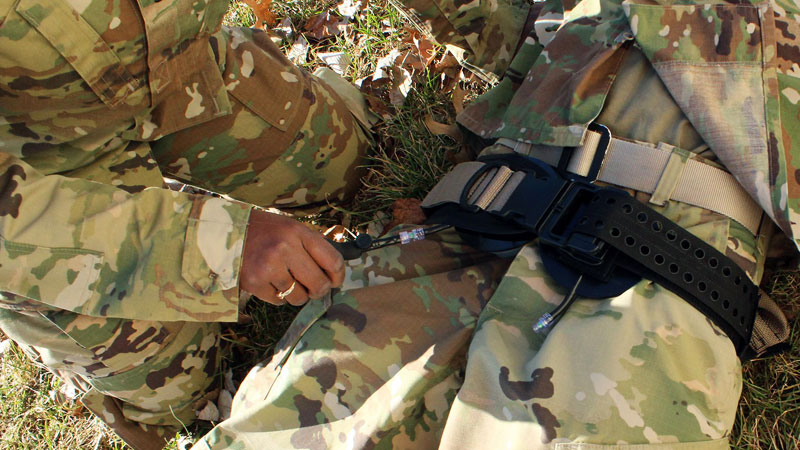Throughout the history of modern warfare, countless wounded fighters have been saved from bleeding to death by tourniquets—the straps or ties that wrap around a damaged limb and staunch hemorrhaging.
But what if a
soldier is shot through the pelvis, or in the armpit, where a tourniquet would be of no use?
Militaries the world over have grappled with the question for decades, and the issue took on new urgency during the US-led wars in Iraq and Afghanistan.
Now the US Army has found an answer.
The service currently is training and equipping its combat medics with a new device, called a junctional tourniquet.
It looks a bit like a belt, but comes with two inflatable bladders that can be pumped up to put pressure over a wound, even in locations where a traditional tourniquet would be ineffective.
“Exsanguination (bleeding to death) is the most common cause of potentially survivable death for wounded warfighters,” said Ellen Crown, a spokeswoman for the US Army Medical Materiel Agency.
The junctional tourniquet is designed so “a person can position it in under a minute—a crucial factor for combat medics who only have mere minutes to save a fellow warfighter’s life if he or she is hemorrhaging.”
The first recorded combat use of a junctional tourniquet was in Afghanistan in 2014, when US and Afghan medics saved a young Afghan National Army soldier who had been shot by insurgents.
The bullet lodged high in his upper thigh, likely severing a femoral artery, a location where a normal tourniquet would have little effect.
By inflating one of the junctional tourniquet’s bladders over the wound, medics stemmed the blood loss, and he ultimately survived.
“The junctional tourniquet is a way to see how can we save more lives,” said the Army’s new surgeon general, Lieutenant General Nadja West.
Already have an account? Sign In
Two ways to continue to read this article.
Subscribe
$1.99
every 4 weeks
- Unlimited access to all articles
- Support independent journalism
- Ad-free reading experience
Subscribe Now
Recurring Monthly. Cancel Anytime.
Improving outcomes
Regular tourniquets had gone in and out of vogue among battlefield medics over the years, West noted.
Their use was sometimes questioned because, if badly applied, they can damage nerves or tissues on a wounded limb.
Now the US Army teaches its combat soldiers to correctly use tourniquets.
“They are usually the ones that are right beside their buddies when something happens,” West said.
“If they are in the vehicle that is hit by an IED (bomb), they may or may not have a medic on that vehicle, but a survivor who can put a tourniquet on within minutes.”
According to West, as many as 93 percent of US troops currently survive being wounded in combat, a record up from 84 percent in Vietnam and 80 percent in World War II.
The US military gained wide experience in Afghanistan and Iraq, where shrapnel and gunshots accounted for about three-quarters of battlefield wounds, according to a study in the Journal of Trauma and Acute Care Surgery.
After regular tourniquets were given to all US soldiers in 2005, the rate of deaths from hemorrhaging dropped 23.3 per year to just 3.5 per year, the study said, and Army officials hope junctional tourniquets will reduce numbers still further.
But nearly a quarter of combat deaths are still considered potentially survivable, according to the study that focused on 4,596 fatalities between 2001 and 2011. In nine cases out of 10, these avoidable deaths were due to massive blood loss.
The US military has also spent millions developing a novel solution to battlefield bleeding.
Called XStat, the technology is essentially a large syringe-like applicator filled with 92 small, tablet-shaped sponges.
The sponges are injected directly into a wound, expanding and swelling to fill the cavity after approximately 20 seconds upon contact with water from blood or bodily fluid.
Read More: Journal of Trauma and Acute Care Surgery
Featured Image – Journal of Trauma and Acute Care Surgery











COMMENTS
You must become a subscriber or login to view or post comments on this article.